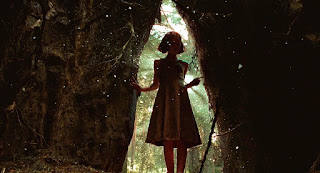Post 34: Macro Elements of Film Form
Macro Elements of Rushmore
Representation:
The represetation in this film is of different age groups, shown through Max and his peers, and then the teachers like Miss Cross, and the parents, like Mr. Blume and Max's dad.
Genre:
The genres for this film are mainly Comedy and Coming of Age, this is mainly portrayed by the narrative, as it follows Max Fischer's life in Rushmore Academy and how his character develops throughout the story. All of the characters effect one another's actions, which is especially noticable in the part of the film where Max and Mr. Blume are constantly trying to one-up each other in pranks (Max filling Mr. Blume's room with bees, and then he drives over Max's bike in his car).
Narrative:
The narrative is linear, following the characters' journeys ad not needing any jumps back in time to remind the viewers of anything that happened in the past. This is similar to the narrative pattern of most of Wes Anderson's films, as his way of storytelling is very recognisable, and keeps the quirkiness of his characters as well as the narrative through his method of writing.
Audience:
This was only Wes Anderson's second film, so the audience at the time of it's release probably didn't go because of his reputation as a director, but audiences who watch the film today may watch it because of his other films. It's original audience was probably a variety of ages, from teenagers upwards, as the storyline doesn't limit the interest to age too much.



Comments
Post a Comment